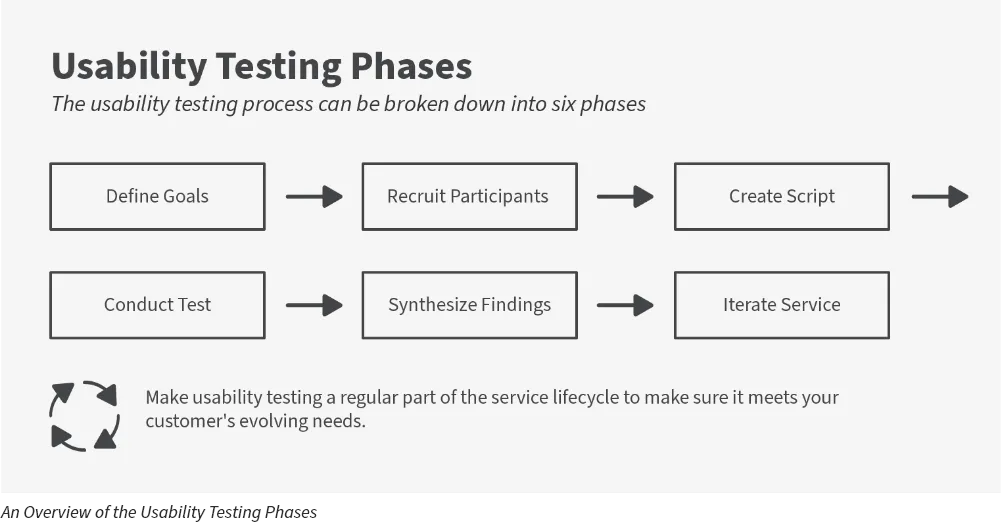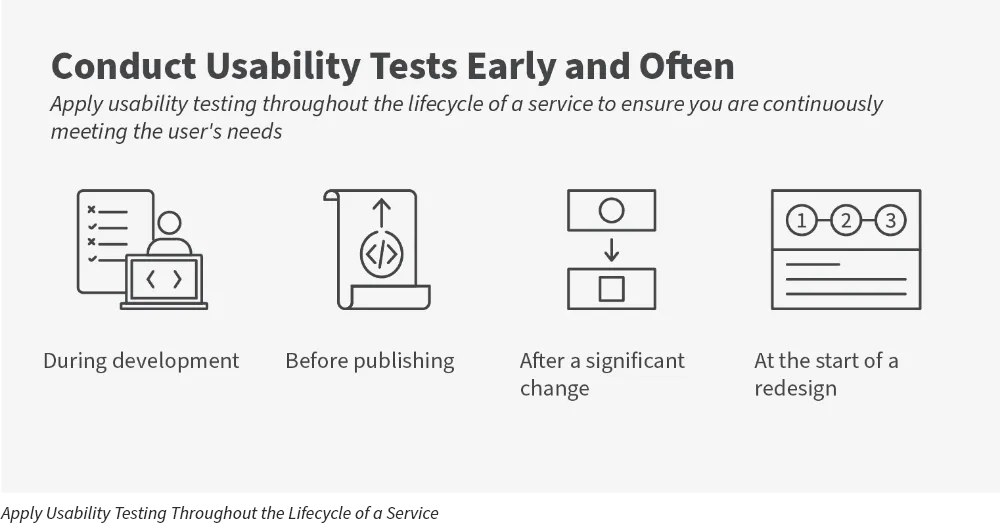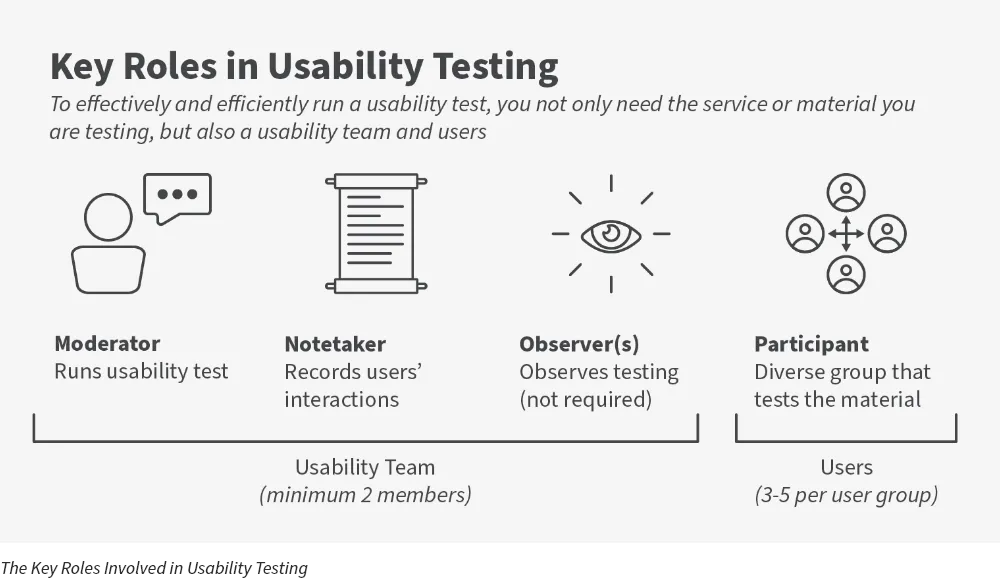Usability Testing Lesson | 15 Minutes
Lesson Objectives
- Understand what usability testing is
- Understand when to use usability testing
- Understand who is involved in usability testing
- Understand why usability testing improves CX
"Our government must be held accountable for designing and delivering services with a focus on the actual experience of the people whom it is meant to serve." - Executive Order 14058
Usability testing helps DHS programs and service teams make sure what they build actually helps the people and organizations the Department serves.
Let's take a look at what a usability test is, when to use it, who is involved, and why it is vital in helping our services meet our user's needs.
What is Usability Testing?
Usability testing is a method used to learn how easy or difficult it is for people to use a service by observing them completing “real life” tasks within the service.
The goal is to identify your users’ pain points and create solutions that are user-focused to produce a service that is easy to use.
Usability Testing Overview
The usability testing process can be broken down into six phases.
- Define Goals and Design Test: Identify tasks you want to observe people doing and create target goals you want to meet while completing the usability test.
- Recruit Users: Find 3-5 volunteers to participate in individual usability testing session.
- Create Moderator's Guide: Create a checklist to follow to give the participant instructions to test a service.
- Conduct Test: Ask the participant to complete real-life tasks within the service to test how easy or difficult it is for users to reach their own goals. Observe and note where users experience confusion, frustration, or ask questions. Capture how they interact with the service and record feedback. (In-person or remote)
- Synthesize Findings: Organize research data to identify patterns in where the design supports users well and where it does not and analyze why.
- Iterate Service: Based on participant feedback, update the service to better serve the users.
Usability testing should be conducted regularly throughout the lifecycle of a service to ensure it meets your customer’s evolving needs. Think of each round of usability testing you conduct as a step toward providing a more effective and equitable service.
What to Look for During a Usability Test
- Errors in the materials found by the user
- Places where the directions were unclear
- Any signs of misunderstanding of the service's information or layout
- Any issues the user has as they try to complete the tasks using the services or materials
- Any behavior by the user that resembles confusion or frustration
Remember: You are testing the service, not the participant.
By conducting usability testing, you are helping your Component make informed decisions about how to update, optimize, and/or create a better service by using actual user feedback to enhance the customer experience.
An Example of a Usability Test
When to Conduct Usability Testing?
Usability Testing Is a Method That Can Be Used at Any Time, Such As
- During development
- Before publishing
- After a significant change
- At the start of a redesign
You will conduct usability testing throughout the lifecycle of a service to ensure you are continuously meeting the user's needs.
Consider Testing These Project Assets as You Design, Develop, and Refine a Service
- Sketching
- Concepts
- Wireframe
- Visualizations
- Mockups
- Prototype (paper & digital)
- Forms (paper & digital)
- Notices
- Letters
- Notifications
- Guidance regulations
Who is Involved in Usability Testing?
To effectively and efficiently run a usability test, you not only need the service or materials you are testing, but also a usability team and users.
Usability Team (minimum 2 members)
- Moderator: Individual running the usability test
- Notetaker: Record users' interaction during testing (non-interactive)
- Observer(s): Observes testing, should also take notes (non-interactive, optional)
Users or Participants (3-5 participants per group)
The users you recruit should represent your services targeted audience in order to gain relevant feedback. Additionally, users should be diverse (ethnicity, language, disability, age, education, income). In some cases, you may target a specific group of users in order to cater to their individual needs.
Example: If USCIS wants to conduct usability testing on a new digital application for work visas. They would be looking to recruit participants that are of a working age and non-US citizens in order to get feedback from actual potential users of the application.
When selecting your number of participants, the goal is to reach the point of least astonishment, which is gathering enough data from your user group that the need for additional data would not have a significant impact on results.
Therefore, you do not need a large number of participants for usability testing.
Why Conduct Usability Testing?
Usability testing is a method used to test your service to validate user needs and create solutions early to save time and resources and reduce the need to rework your service after releasing it to the public.
Usability Testing Helps With
- Making your service easier to use.
- Making service iteration more effective and efficient.
- Reducing burden hours of employees and customers.
- Systematizing the process for improving and creating new services.
You can enhance your customer’s experience by utilizing actual user feedback to create a service you can be confident in and a service your users will have a positive experience with.
In Summary
Usability testing can help your DHS Component bridge the gap between your service and customer’s needs. By using the customer’s voice, you can create and iterate your services to build credibility and trust within your customer base.
In our mission to improve our customer's experiences across each DHS Component, we must focus on how our users interact with our services. Usability testing is key to gaining real user feedback that can lead to significant improvements helping us make the changes that matter the most to the people we serve.



